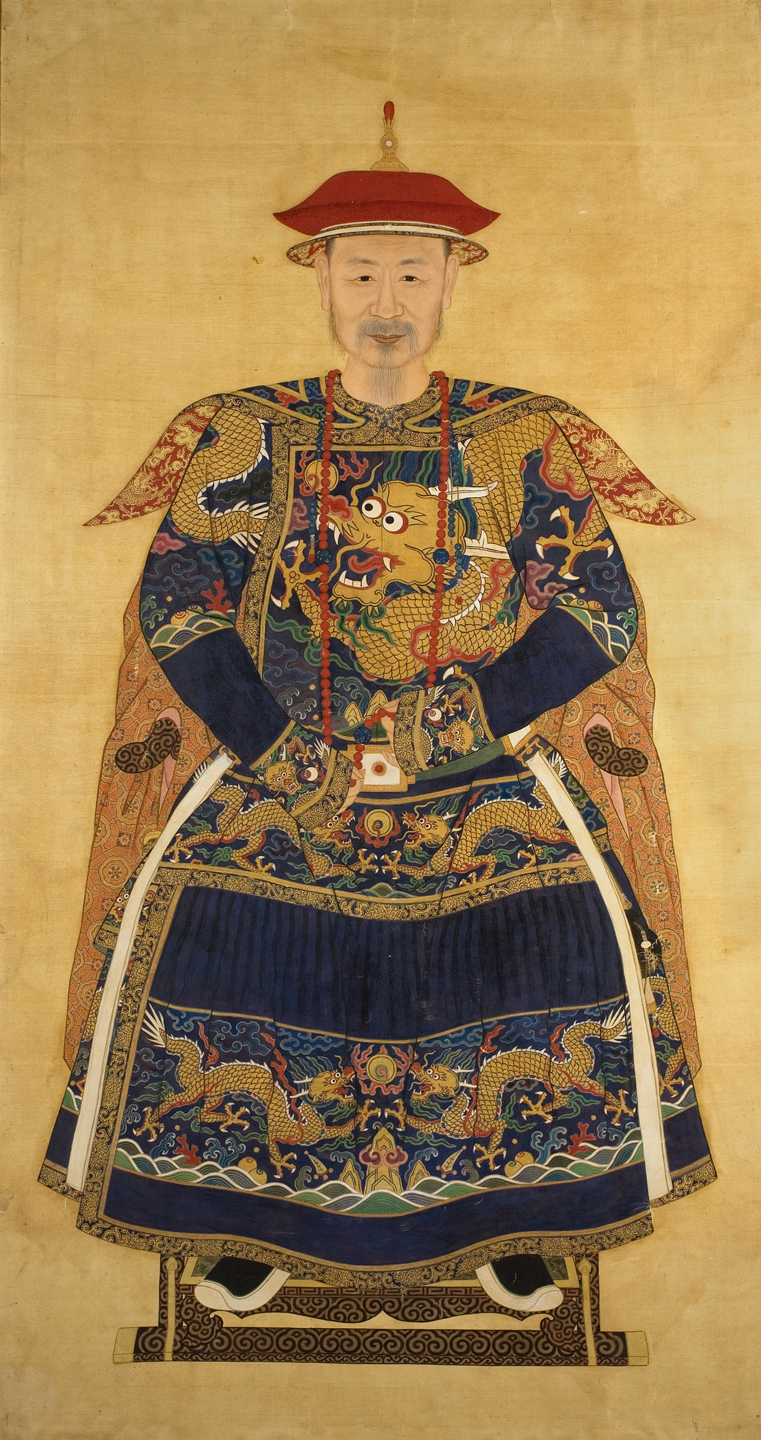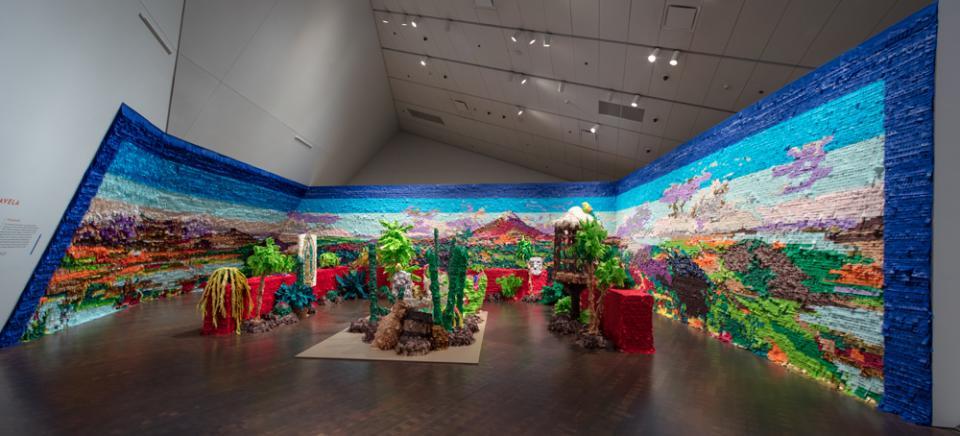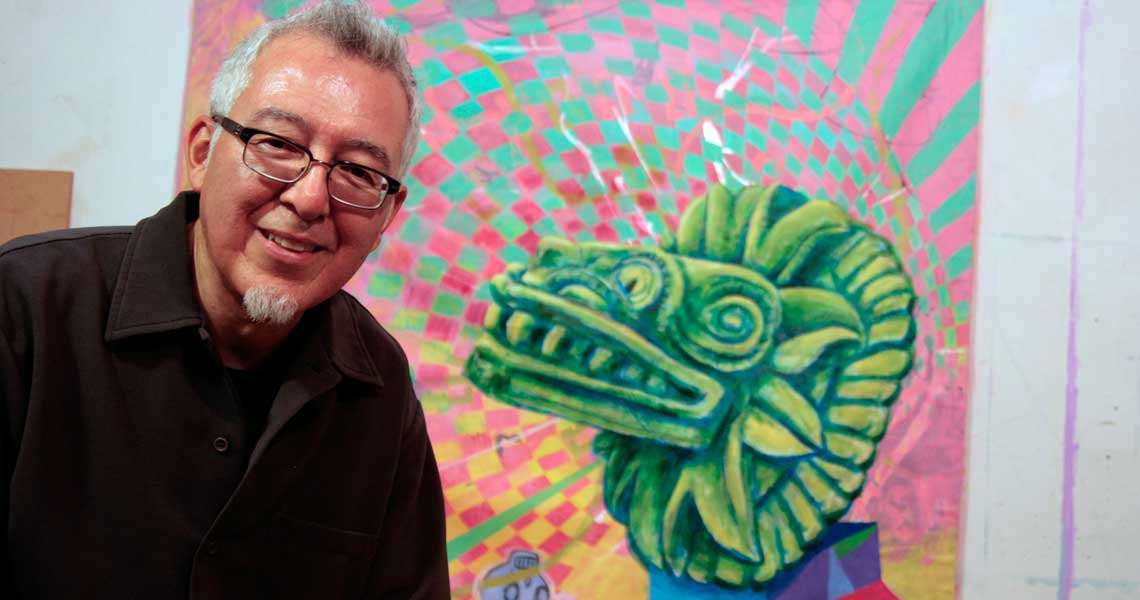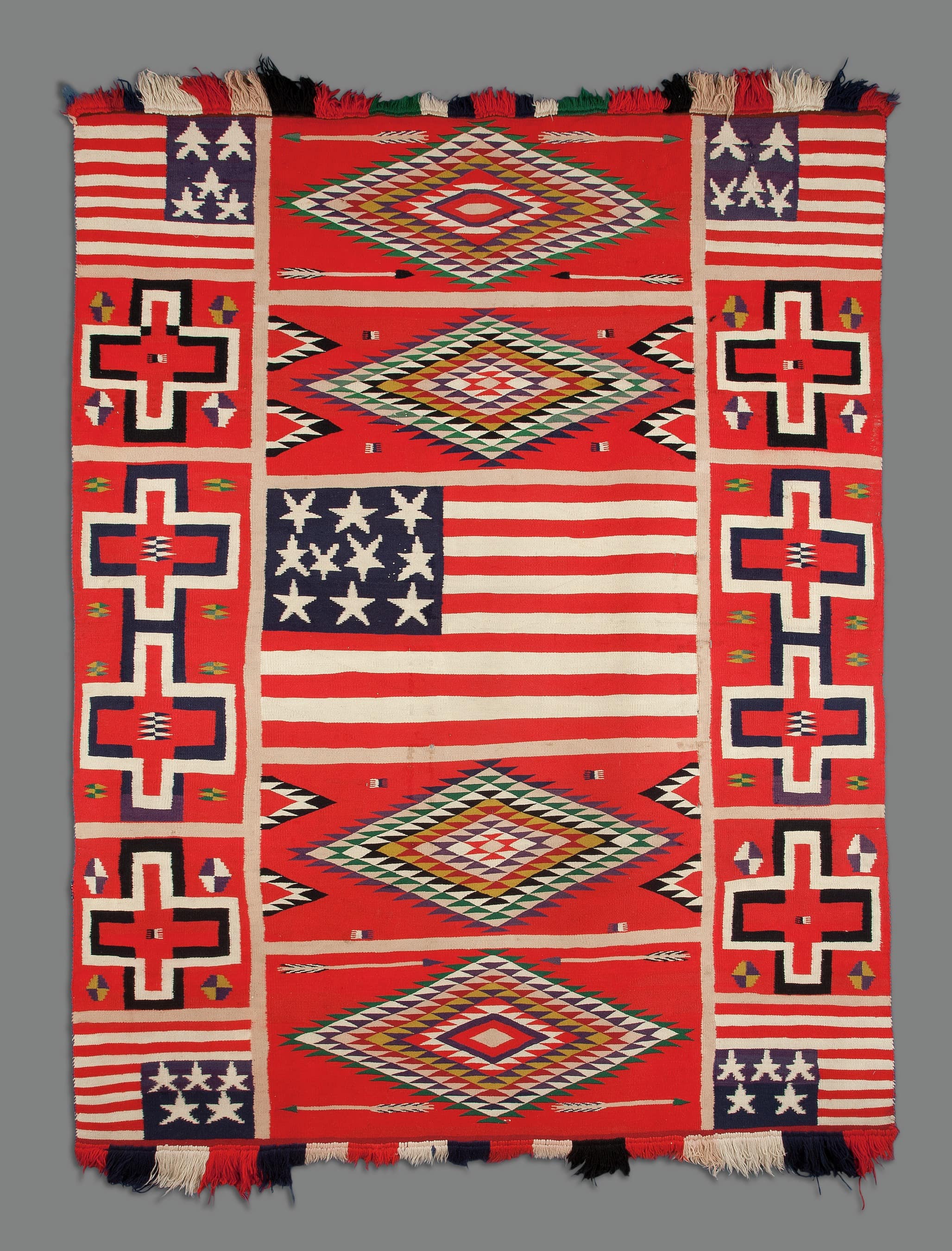Children will learn how things that are bumpy, lumpy, and not necessarily “perfect” are often just as special as things that seem smooth and “perfect.” They will have an opportunity to explore the idea that imperfection is still important and beautiful (wabi sabi).
Students will be able to:
- use at least three words to describe what they see and feel when handling objects you provide;
- use at least three words to describe the Black Raku Tea Bowl;
- say the words wabi sabi; and
- explain what wabi sabi means using their own words/examples.
Lesson
- In advance: Read the About the Art section on the Black Raku Tea Bowl. Next, make a sample tea bowl out of clay or model magic. Shape the bowl with imperfections such as bumps, indentations, a bumpy rim, etc. Also, ask children to bring in their favorite, well-loved stuffed animals, blankets, etc.
- Warm-up: Place assorted objects in lunch sacks. Have children feel the objects without looking at them and describe what they feel. (May do as a large group by calling up volunteers, or in small groups of 3-4 allowing students to share with a partner.)
- Have the children show you their special objects. Talk about their objects and why they are special. Are the objects perfect? Does that make you love them less? Does having a well-loved, well-worn object make it more special? Do things have to be perfect for us to love or enjoy them?
- Next, take out the bowl that you made before class. Call volunteer children up one at a time to handle the bowl and describe what they feel. Call on other children in the class to tell you what they see. Tell the children that the tea bowl you made is special because it’s not perfectly smooth, that it reminds you of the beauty in life from things that aren’t perfect, just like their well-loved objects.
- Teach them the words wabi sabi. Let them play around with saying the words. Using words appropriate for young learners, explain that wabi sabi means something that is simple—not fancy—and it also means something that gets more beautiful as it gets old and worn. Ask the students if they think the bowl and their special objects are wabi sabi.
- Show the children the picture of the Black Raku Tea Bowl. Allow them time to look at the picture and tell a partner what they see. Ask them if the bowl is a “wabi sabi” bowl (shows the concept of wabi sabi) and how. What about the bowl do they think is special?
- To end, have children go on a wabi sabi scavenger hunt around the room, pointing out objects that might be worn, bumpy, and not perfect, but well-loved and treasured. Share what they find.
Materials
- Well-worn objects that are special to the children, brought in from home
- A bowl you’ve made out of clay or air-dry clay (see description below)
- Brown paper lunch sacks
- Assorted objects with different textures (e.g., cotton balls, tennis ball, baseball, doll, giant puzzle piece) to put in the brown paper lunch bags
- About the Art section on Black Raku Tea Bowl
- One color copy of the tea bowl for every four children, or the ability to project the image onto a wall or screen.
Standards
- Visual Arts
- Observe and Learn to Comprehend
- Relate and Connect to Transfer
- Envision and Critique to Reflect
- Language Arts
- Oral Expression and Listening
- Collaboration
- Critical Thinking & Reasoning
- Information Literacy
- Self-Direction
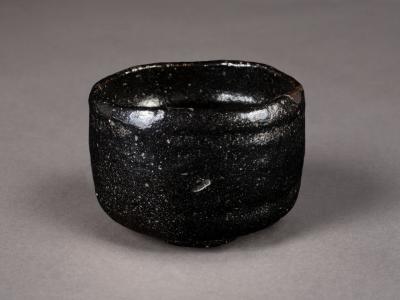
Black Raku Tea Bowl
3rd-7th generation of Raku family, Japan
1800s
3.625 in x 4.75 in
Gift of Ellen and Jack Ramsay Harris, 1993.12
Photograph © Denver Art Museum 2011. All Rights Reserved.
Until recently, the majority of raku [RAH-koo] ware was made by generations of the Raku family in Japan. This black tea bowl was most likely made by a member of the Raku family sometime during the 1800s, between the 3rd and 7th generations of the family. Raku wares are different from other Japanese ceramics because potters form the pieces by hand rather than on a potter’s wheel. Each bowl the raku potter makes shows signs of his fingers and hands. It’s almost as though the artist was communicating to you through the clay. After he is finished creating the shape of the bowl, the potter applies a glaze to the piece and fires it in a kiln at a low temperature. The potter of this bowl chose a very plain glaze that is all black. There are variations in the texture; some areas of the surface are slightly rough and pitted. The craftsman must have wanted to leave out decoration and make a bowl that was modest rather than showy; quiet rather than loud.
The making of raku ware was initiated by Chôjirô [CHO-jih-row] during Japan’s Momoyama period (1573-1615). Chôjirô was asked by the tea master Sen Rikyû [sen REE-kyoo] to make tea bowls for a tea ceremony. Chôjirô was presented with a seal bearing the Chinese character for “raku.” The term raku derived from the word Jurakudai, the name of a palace built by the leading warrior statesman of the time. “Raku” then became the name of the family that produced the ceramics. This is the only example in history of a family name becoming synonymous with the ceramics they produced. Raku is the most renowned of all tea ceremony ceramics, and the Raku family was highly respected for their skillfully crafted tea bowls and table wares. Now, many potters make raku ware.
The artist who made this bowl took into consideration how the bowl would be handled and viewed during a tea ceremony. Because the bowl is very plain, perhaps the artist was inspired by the idea of how attractive a bowl can be when it is very subtle. A bowl that is subtle has less obvious qualities that are very hard to notice. However, if a guest examines the bowl very carefully, he can see and feel the details. Maybe this artist wanted to challenge the people who drank from the bowl to pay very careful attention to its simpler qualities. The other thing that certainly inspired this artist was his knowledge of all the potters in the Raku family who had come before him. He was making a bowl in the same tradition as these earlier potters out of respect for their skill and design style.
The tea bowl is the centerpiece of the Japanese tea ceremony. Traditionally, a tea bowl has no handles and is made to be held in both hands. It is the most active of all tea utensils as it gets passed around to all of the guests. Each guest drinks out of the bowl and examines its shape, color, and texture before returning it to the host. Those who make tea bowls aim at making a bowl that will engage the senses of vision and touch, and small and subtle variations are often prized.
The ritual of serving tea involves a number of specific steps for the host and guests. It can last anywhere from twenty minutes to five hours and consists of two distinct stages, represented by the drinking of thick tea (about the consistency of white Elmer’s glue) and thin tea (about the consistency and frothiness of hot chocolate). Both types of tea are prepared by whisking green tea powder with water, but the powder used to make thin tea comes from plants that are younger than those used for thick tea, and more water is used in the preparation of thin tea.
When preparing for the ceremony, the host places a little mountain of powdered green tea inside a tea caddy or container. Once the ceremony begins, he removes the lid of the caddy and scoops a small amount of tea powder into a tea bowl, whisking it with hot water to create a bitter green tea. After the guests have finished their tea and the host has cleaned the utensils, the guests will often examine each item, noticing its color, shape, size, glaze, and texture. The utensils are handled with extreme care and reverence because they are often very valuable. The host chooses which containers to use based on who is attending the ceremony, the level of formality, the season, the time of day, and how each container will complement other utensils used.
Information about the Japanese tea ceremony can be found here.
Another tea bowl in the Denver Art Museum’s collection:
Two examples of tea caddies in the Denver Art Museum’s collection:
Ceramic Tea Caddy for Thick Tea
Natsume, Sun and Moon Thin Tea Caddy
Details
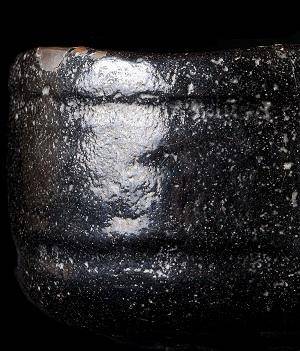
Glaze
Glaze is the shiny, glass-like coating that covers the surface of the bowl. Raku bowls are traditionally covered in a glaze that is made out of pulverized stone from the Kamo River in Japan. After the glaze is applied, the bowl is fired, a process that melts the glaze and turns it into a new substance—glass. When the bowl cools, the glaze hardens, making the bowl waterproof. The bowl is removed from the fire when it is red hot and the sudden temperature change causes the glaze to turn black. Raku tea bowls are almost always covered in monochrome black or red glazes.

Irregular Oval Mark
There is a distinctive mark on what is probably the front of the bowl, which was most likely made when the bowl was removed from the fire with tongs. This small irregularity was greatly admired.

Irregular Shape
The lip of the bowl is uneven and the sides are somewhat bumpy, indicating that the bowl was made by hand. This is another example of how the bowl embodies the Japanese belief that there is beauty in things that are simple and imperfect.
Funding for object education resources provided by a grant from the Morgridge Family Foundation. Additional funding provided by the William Randolph Hearst Endowment for Education Programs, and Xcel Energy Foundation. We thank our colleagues at the University of Denver Morgridge College of Education.
The images on this page are intended for classroom use only and may not be reproduced for other reasons without the permission of the Denver Art Museum. This object may not currently be on display at the museum.

